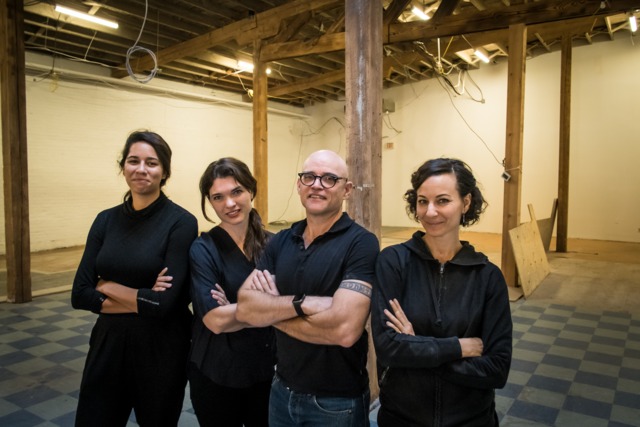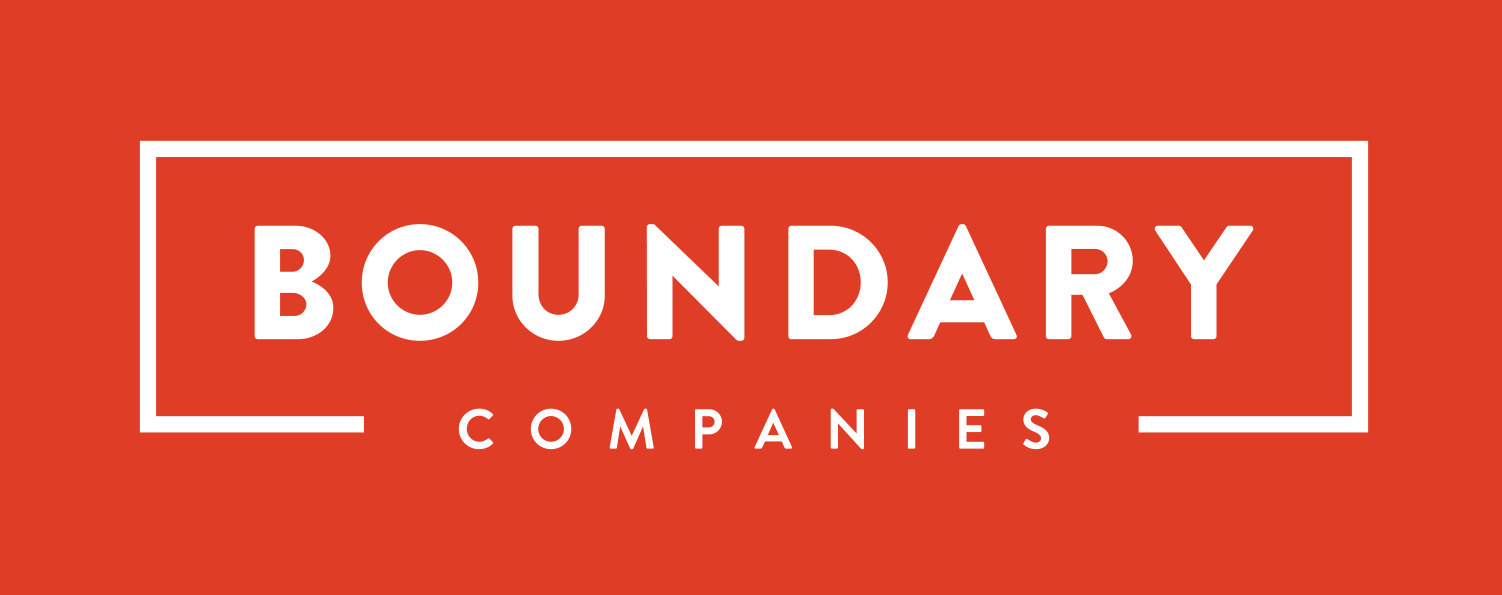
A New Artist Space is Coming to Eckington
With STABLE, artists Caitlin Teal Price, Tim Doud, and Linn Meyers hope to create a sustainable model for local arts communities.
Rebekah Pineda, Caitlin Teal Price, Tim Doud, and Linn Meyers.DARROW MONTGOMERY
Ask any artist working in D.C. and they’ll tell you the same story: Nobody trusts that their studio situation is going to last. Even the artists with a cherry deal know that the grim call from the landlord can come at any time. Space is at a premium for all kinds of uses in the District, and low-cost studios suitable for painters, photographers, sculptors, and designers are getting harder and harder to come by. The artists with a precarious lease on a carriage house or a handshake deal for a corner of a warehouse are the lucky ones. Plenty would settle for less.
That’s a problem that three D.C. artists—Caitlin Teal Price, Tim Doud, and Linn Meyers—hope to solve with STABLE. The new arts nonprofit organization has a unique mission: To make space for artists to make things. Working with Rebekah Pineda, an arts administrator with development experience from the Sitar Arts Center and Hamiltonian Gallery, the team is building out a model for providing affordable, sustainable art studios for artists in the District.
“I had this opportunity. My husband builds bars and things, and they were redeveloping Ivy City,” Price says. “I had this idea to put in studio space over there, because there was tons of empty space, and you know what D.C. needs is more artists’ space.”
STABLE got its start three years ago, when Doud and Price met through the National Portrait Gallery, which has exhibited work by both artists. They started talking about a grander idea—something bigger than the Ivy City project that eventually turned into Open Studio, a printmaking shop. Lisa Gold, the former executive director of Washington Project for the Arts, asked them to give a talk on the lack of affordable studio space, which pushed Price and Doud to firm up their ideas as a proposal. Meyers—whose installation at the Hirshhorn Museum and Sculpture Garden closed in August—heard their talk and asked to get involved with their pitch.
“We didn’t want it to be structured as a traditional studio,” Doud says. “We wanted there to be a movement within the studio.”
Now, STABLE’s work is coming close to fruition. If the founders can raise $300,000 by January 1, 2018, they will sign a letter of intent with real estate developer Boundary Companies for about 12,000 square feet in the Eckington neighborhood. They intend to build out more than two dozen below–market rent studios, with flexible programming spaces to be used by artists and other arts organizations, which are key to STABLE’s model. It would double the number of buildings in the city currently devoted to artist studios (the other one being the colony at 52 O Street NW).
The opportunity came to the artists in January of this year, as developers cemented plans to reshape a huge chunk of Eckington. A number of developments are all shaping up at once: Boundary partnered with JBG to purchase a former wholesale flower market and State Farm Insurance building, where the developers plan to erect Eckington Yards, a whopping 700,000-square-foot mixed-use project. Nearby, Foulger-Pratt Companies and the NoMa Business Improvement District jointly acquired a parcel from Pepco, which they will use to put up another mixed-use building as well as a 2-acre park near the Metropolitan Branch Trail. (Good news, cyclists: They plan to straighten out that awful Z-shaped kink in the trail.)
Separately, Boundary hooked up with Foulger-Pratt to purchase the former Art and Drama Therapy Institute building at 327 S Street NE. From the start, the developers planned to “create a building where artists and retailers and makers, all of which are historical users who are found in Ward 5, can coexist in a manner that will create a vibrant community,” says John Wilkinson, president of Boundary Companies. That’s where STABLE plans to go.
So far, Sirkku “Dr. Sky” Hiltunen, the founder of the Art and Drama Therapy Institute, plans to keep an office for her new project, Beyond Mask Expressions. A local home-goods chain is also interested in becoming a tenant.
Boundary got word of STABLE’s mission through Lauren Hilyard, a D.C. art consultant. The developer started talking with the artists in February. STABLE aims to build something sustainable in the long run; getting a lease with a real runway was one of their top priorities going into talks with various developers. If they can put together the money by January for the Boundary project—no small ask—STABLE will get a 10-year lease. That’s enough time to figure out whether or not Eckington works as a long-term home for STABLE, Meyers says. And if it doesn’t, it’s enough time for STABLE to move somewhere else.
In order to make the STABLE plan solvent, the founders are looking for buy-in from a variety of organizations. Most of the 25 to 30 studios at STABLE will go to individual artists, who can rent the space on a longterm basis. But around 10 of the studios may be available to institutions for shorter leases of a year or less. An organization like, say, the D.C. Commission on the Arts and Humanities might want to rent a STABLE studio to give out to artists as a kind of grant. Area universities and museums might have an interest in supporting a studio fellowship, too. That’s the thinking: Get organizations to pay for the service, rather than going hat-in-hand to organizations looking for support.
“We’re not going to be on a hamster wheel for every dime on an annual budget,” Meyers says. “What we pay is the same as what we pass along to the artists.”
***
One unique STABLE proposition would put D.C.’s status as the nation’s capital to work for local artists. The founders hope to gin up interest with area embassies in renting a studio (or studios). Think of a rotating visiting-artist studio-slash-gallery space, one geared toward cultural outreach programs, supported by the Goethe Institut or Solas Nua or the like. An international embassy component could potentially boost the profile of the Eckington development. Moreover, it would give the city a flexible cultural platform the likes of which almost nobody is currently providing—a program no other city can fulfill the same way.
The embassy platform notwithstanding, STABLE is focused on D.C. and representing its art scene in an equitable way. “The artists at STABLE will vary in age, gender, and culture,” Meyers says. “We want to have artists from all of the eight wards in D.C., some who are at the beginnings of their careers and some who are more well established. The architecture of the space will reflect these goals. We will have small, medium, and large studios.”
Even if STABLE falls short of turning Eckington into a destination arts district, it will shore up the fortunes of the city’s art scene for a long time. Artists couldn’t save their studios at the Union Arts building, which closed last year, or the Gold Leaf Studios building before that, or umpteen other studio buildings before that. This time, a developer is giving artists an opportunity to build something new. If STABLE lives up to its founders’ vision, it will add more to the city than cultural infrastructure.
“We want people circulating through the space, so it’s not just people going into their studios and shutting the door and doing their own thing,” Price says. “We want to build a community, an artists’ hub.”
Originally published: Washington City Paper, October 26, 2017, by: Kriston Capps
GO TO FULL ARTICLE
